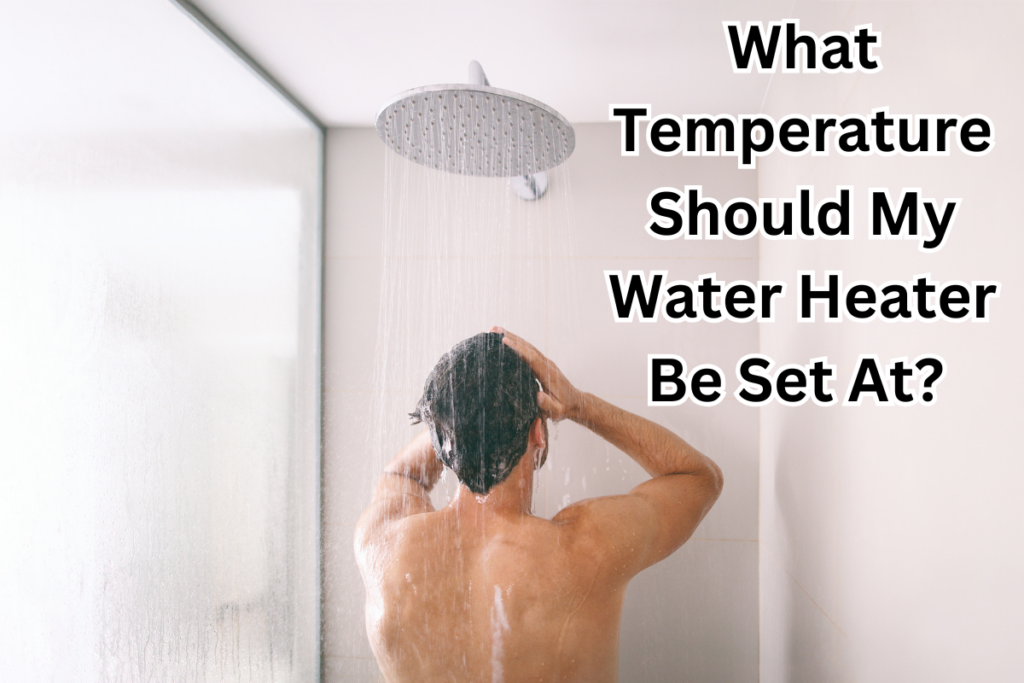MON-FRI / 7:00 AM - 5 PM

Setting your water heater to the right temperature is essential for both comfort and safety. Whether you want to prevent scalding, improve energy efficiency, or reduce the risk of bacteria growth, knowing what temperature your water heater should be set at can help you make the best decision for your household. In this guide, we’ll discuss the recommended settings, factors that affect temperature choice, and tips to maintain optimal performance.
The U.S. Department of Energy (DOE) and most plumbing experts recommend setting your water heater to 120°F (49°C). This temperature is considered the ideal balance between preventing burns, reducing energy consumption, and minimizing bacterial growth.
However, the maximum setting for most water heaters is 140°F (60°C), which some households may prefer for specific needs. Let’s explore the pros and cons of these settings.
Many professionals suggest keeping your water heater at 120°F for the following reasons:
Prevents Scalding: Water above 120°F can cause burns within seconds, especially for children and the elderly.
Saves Energy: Lower temperatures reduce energy usage, leading to lower utility bills.
Prevents Bacterial Growth: This setting still helps control Legionella bacteria, which can thrive in stagnant warm water.
Extends Water Heater Lifespan: Reducing heat stress on the tank can prolong its life and efficiency.
While 140°F is not necessary for most homes, it may be beneficial in some cases:
Larger Households: If you use a lot of hot water daily, this setting ensures a steady supply.
Dishwashers Without Built-In Heaters: Some older models require hotter water to sanitize dishes properly.
Higher Risk of Bacteria Growth: If someone in your home has a weakened immune system, hotter water may provide extra protection against bacteria.
Changing your water heater setting is usually simple:
Turn Off Power or Gas: For safety, shut off the power (electric) or turn the gas valve to “pilot” mode (gas water heaters).
Locate the Thermostat: Most electric water heaters have a thermostat behind an access panel, while gas heaters have a dial near the bottom.
Adjust the Setting: Use a flathead screwdriver or adjust the dial to the desired temperature.
Wait and Test: Allow several hours for the change to take effect, then test the water temperature at the faucet.
To keep your water heater running optimally, follow these tips:
Insulate the Tank: This helps maintain heat and reduce energy costs.
Flush the Tank Annually: Removes sediment buildup for better efficiency.
Check the Anode Rod: Replacing a worn-out anode rod can prevent corrosion inside the tank.
Test the Pressure Relief Valve: Ensures the safety mechanism is working properly.
Understanding what temperature your water heater should be set at is crucial for safety, efficiency, and overall comfort. While 120°F is ideal for most households, some may benefit from 140°F under specific conditions. By adjusting and maintaining your water heater properly, you can enjoy reliable hot water while keeping energy costs in check.
If you’re unsure about the best setting for your home, consult a professional plumber for guidance.
Sources:
Understanding common plumbing issues and how to address them can save homeowners time, money, and frustration. While some minor fixes can be handled with DIY solutions, persistent or severe problems should be addressed by a professional plumber.
For expert plumbing repairs and maintenance, contact a trusted plumber in your area today!

Pro Flow Plumbing Solutions offers top-quality residential plumbing and emergency services. Licensed, insured, & experienced in all aspects of residential plumbing.
© Pro Flow Plumbing 2024. All Rights Reserved.
This site uses cookies to enhance your browsing experience. By continuing to use this site, you consent to our use of cookies. For more information on how we use cookies and how you can control them, please read our privacy policy